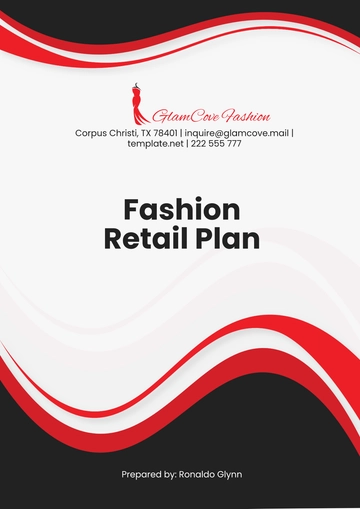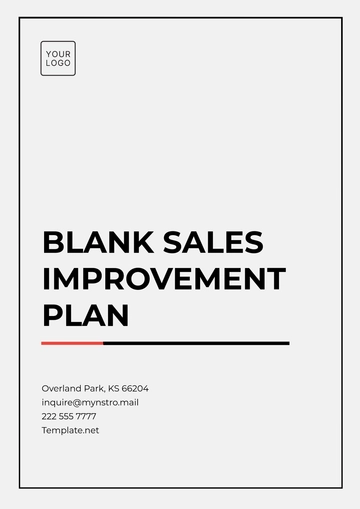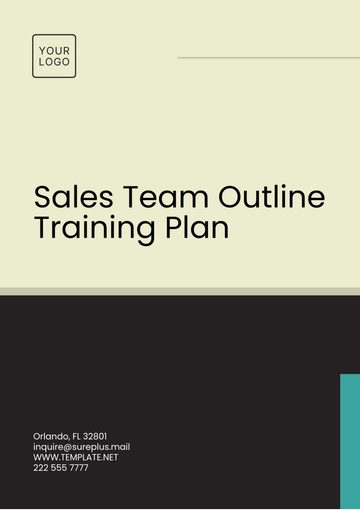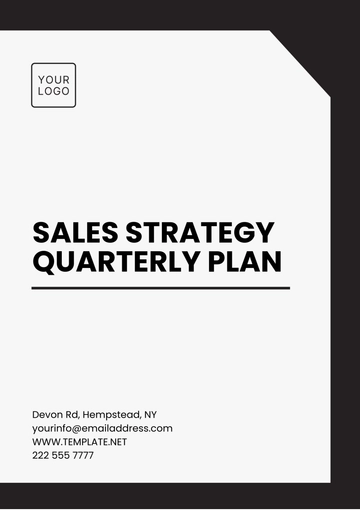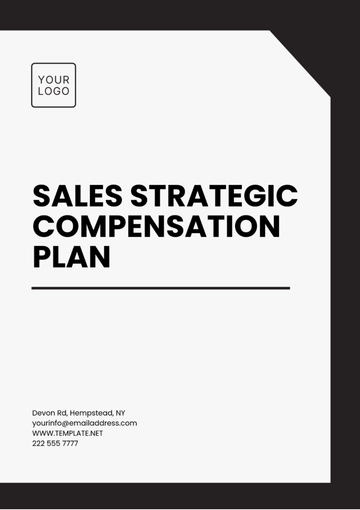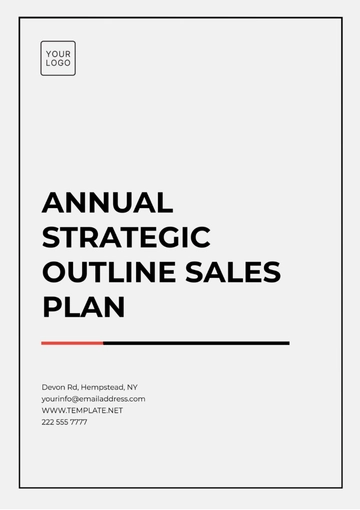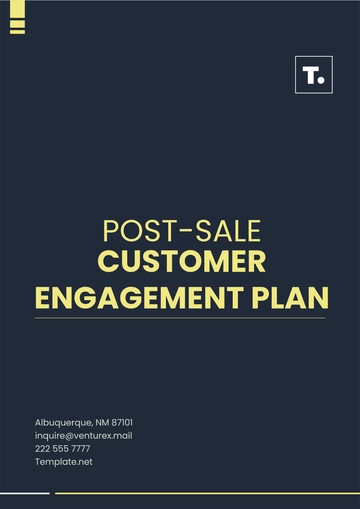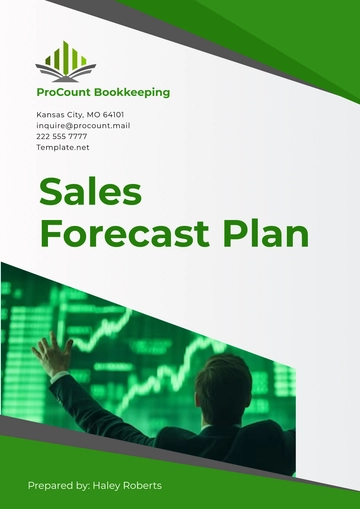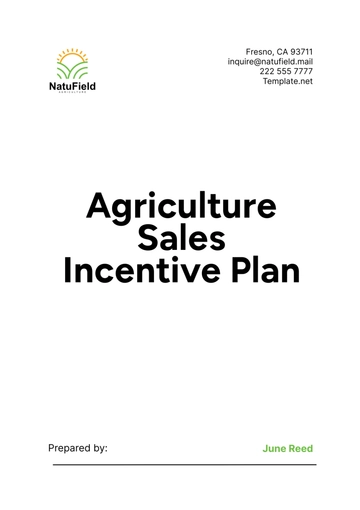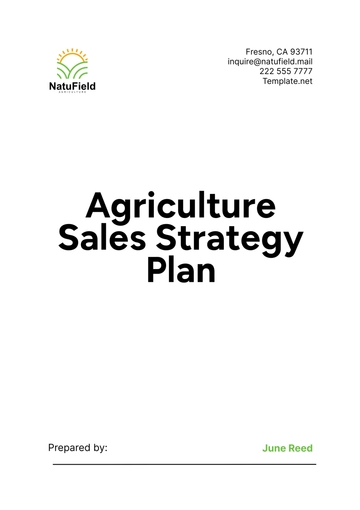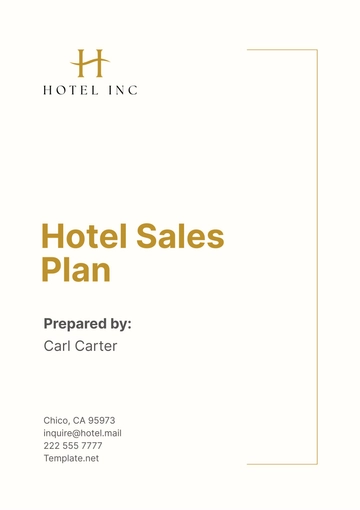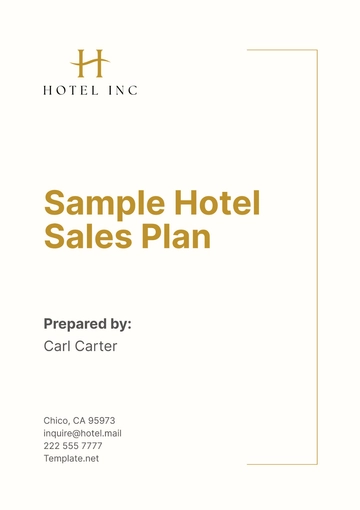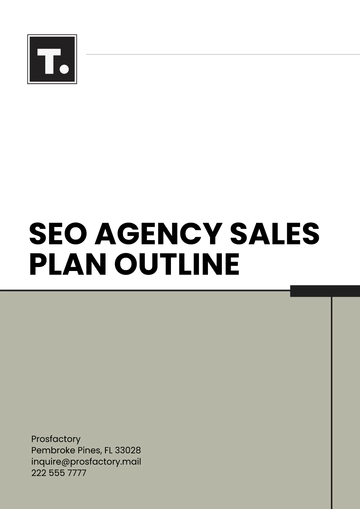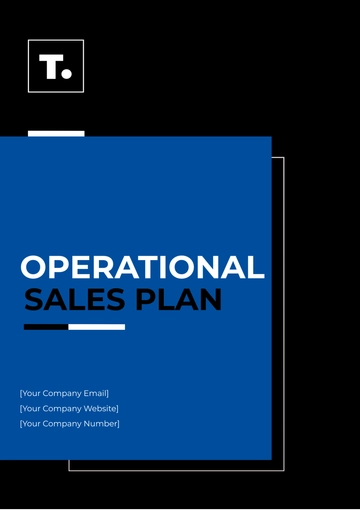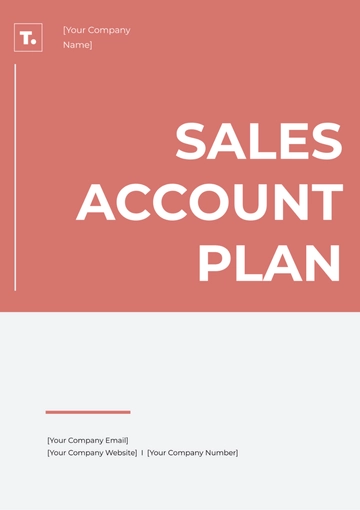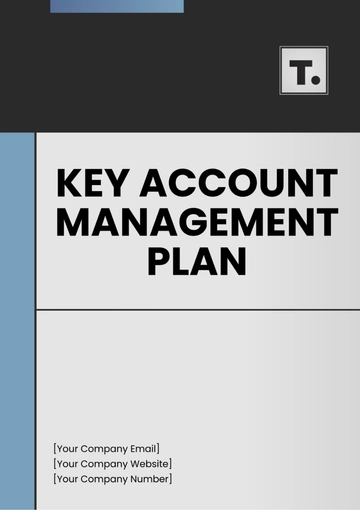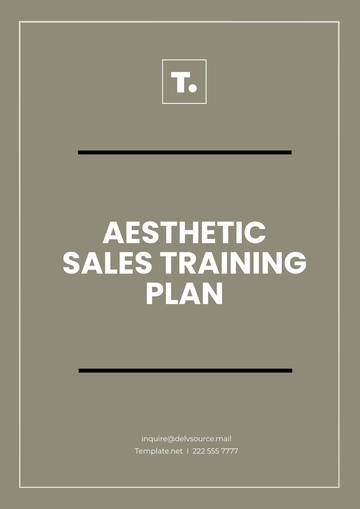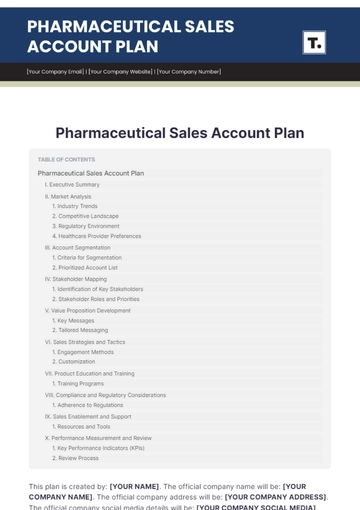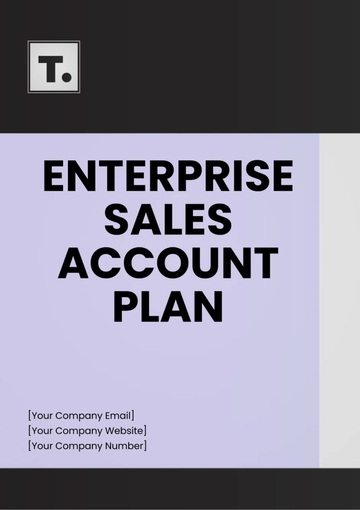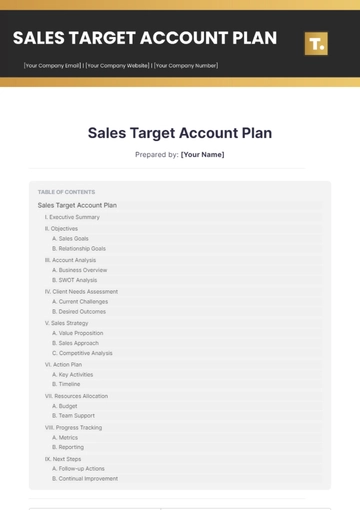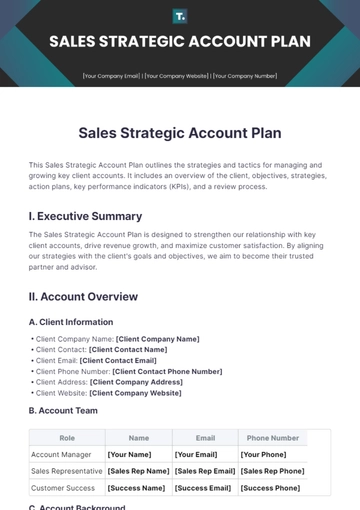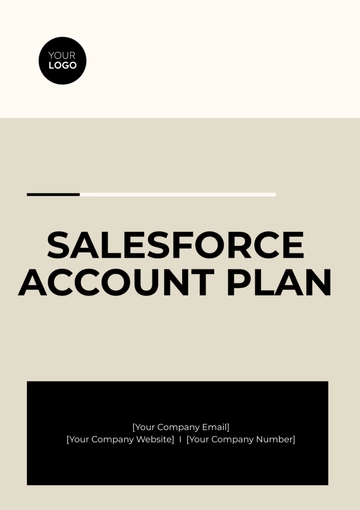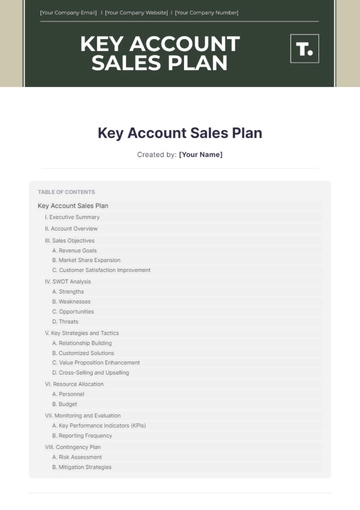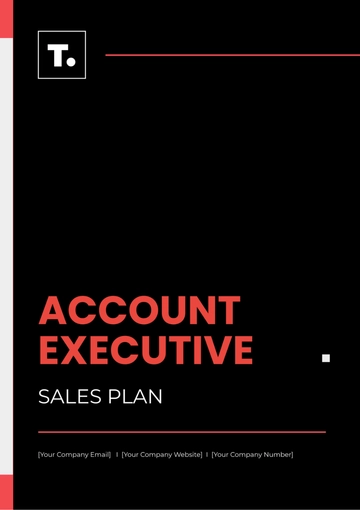Free Sales Quarterly Lead Strategy Plan
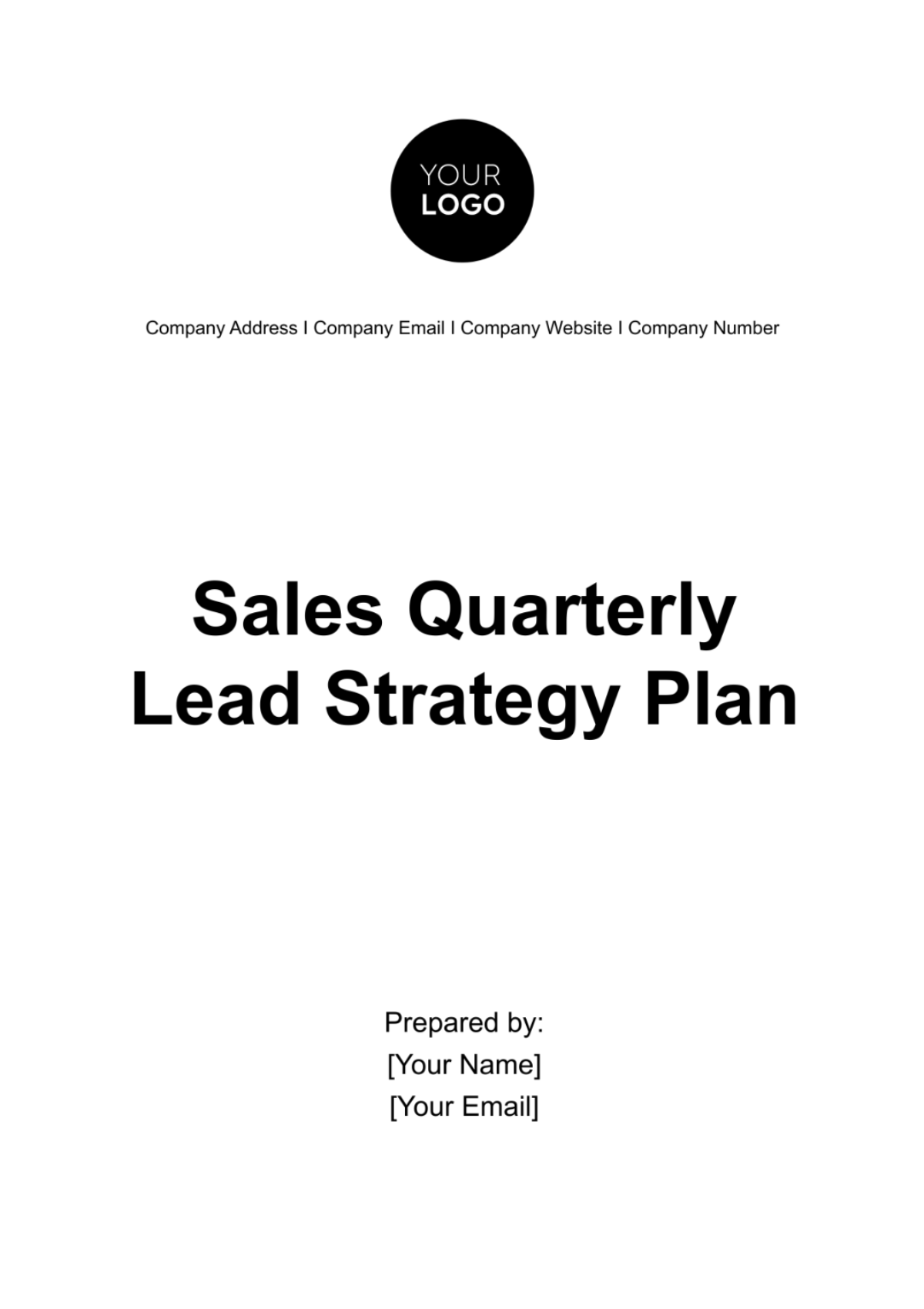
Sales Quarterly Lead Strategy Plan: [Quarter] [Year]
Company: [Your Company Name]
Quarter: [Month Day, Year] - [Month Day, Year]
I. Goals And Objectives
A. Revenue Target: Our primary goal for [Quarter] [Year] is to achieve a quarterly revenue target of $[0] million. This represents a [00]% growth over the previous quarter. To achieve this, we will focus on delivering exceptional value to our clients and expanding our market reach.
B. Lead Generation: In order to fuel our sales pipeline and achieve our revenue goal, we aim to generate [0,000] high-quality leads. These leads will be sourced from both inbound and outbound strategies, ensuring a balanced and diversified lead pool.
C. Conversion Rate Improvement: Increasing the conversion rate from leads to closed deals is crucial. Our objective is to boost the conversion rate to 15%, emphasizing the importance of nurturing and qualifying leads effectively. Achieving this will enhance our overall sales efficiency and revenue growth.
D. Customer Satisfaction: Beyond the numbers, we aim to maintain a customer satisfaction rating of [00]% or higher. Happy customers are our best promoters, and their positive experiences will drive organic growth and repeat business.
II. Target Audience
Our target audience encompasses mid-sized businesses and enterprises primarily in the technology, healthcare, and finance sectors. Within these industries, our ideal customer profiles include:
Technology Sector | |
IT Managers | Responsible for overseeing technology infrastructure and software solutions. |
Chief Technology Officers (CTOs) | Decision-makers focused on technology strategy and innovation. |
Healthcare Sector | |
Healthcare IT Directors | In charge of technology systems in hospitals and healthcare organizations. |
Chief Medical Information Officers | Leaders driving digital transformation in healthcare. |
Finance Sector | |
Chief Financial Officers | Responsible for financial planning, strategy, and technology investments in financial institutions. |
Key Characteristics:
Our target audience typically exhibits the following characteristics:
Industry Knowledge | They are well-versed in their respective industries and are aware of the unique challenges and opportunities. |
Budget Authority | They have the authority to allocate budgets for technology solutions and are keen on investments that deliver long-term value. |
Complex Needs | They face complex challenges, such as compliance requirements or the need to streamline operations. |
Innovation-Minded | They are open to innovative technology solutions that can give them a competitive edge. |
Scalability Concerns | They need solutions that can scale as their organizations grow. |
III. Lead Generation Strategies
A. Inbound Marketing Excellence: Our team will continue to create high-quality blog content, whitepapers, and case studies that specifically address the pain points and challenges faced by our target industries. We'll work on optimizing our SEO strategy to enhance our online visibility and ensure that potential leads find our content easily. Additionally, we will use targeted email campaigns that not only engage prospects but also provide actionable insights and solutions to their problems.
B. Outbound Prospecting Prowess: Our seasoned sales professionals will implement a personalized cold outreach strategy. They'll craft compelling, tailored email messages and phone call scripts to capture the attention of potential leads. By leveraging market research and segmentation, our team will ensure that the right message reaches the right decision-makers in our target companies.
C. Events: Knowledge Sharing And Networking: We recognize the power of direct engagement, so we plan to attend key industry conferences to both showcase our expertise and foster valuable networking connections. Furthermore, we'll host webinars that spotlight our software solutions. These webinars will not only demonstrate our commitment to solving industry challenges but also provide a platform for interactive learning, enabling us to connect with potential leads in real time.
IV. Lead Nurturing
Effective lead nurturing is the backbone of our strategy, ensuring that we cultivate relationships with potential customers and guide them through their buying journey. Our approach emphasizes personalized engagement and timely responses to their needs.
A. Segmentation And Personalization: We will employ advanced lead scoring models to segment leads based on their engagement and fit with our solutions. This segmentation will allow us to deliver tailored content and messages that resonate with their specific pain points and interests. Personalized communication will include custom email sequences and relevant content recommendations.
B. Drip Email Campaigns: Our marketing automation platform will enable us to send a series of targeted emails to each lead segment. These campaigns will provide a blend of educational resources, case studies, and product information, progressively nurturing leads towards a deeper understanding of our solutions.
C. Multi-Channel Engagement: Recognizing that prospects engage through various channels, we will employ a multi-channel approach. In addition to email, we'll engage leads through social media, webinars, and personalized follow-up calls, ensuring a seamless and consistent experience across touchpoints.
D. Lead Scoring Refinement: We will regularly review and refine our lead scoring criteria to ensure that we're prioritizing leads effectively. Adjustments will be made based on lead behavior, engagement, and any additional demographic or firmographic data we collect.
E. Timely Responses: Speed is of the essence in lead nurturing. We commit to responding to inquiries and requests promptly, aiming for initial outreach within [00] hours. Quick responses demonstrate our dedication and provide a positive experience for potential customers.
Our lead nurturing efforts will be continuously monitored and optimized, with a strong focus on delivering value, building trust, and moving leads smoothly through the sales funnel, ultimately leading to higher conversion rates and closed deals.
V. Sales Funnel Stages
A. Lead Capture (Awareness): In this initial stage, our primary focus is on capturing the attention and interest of potential leads. We will create compelling blog content, engaging social media posts, and informative industry insights. We'll also optimize our website for user-friendly navigation and offer downloadable resources such as eBooks and infographics. Our aim is to make prospects aware of our solutions and encourage them to explore further.
B. Lead Qualification (Interest): Once we've captured leads, we'll employ lead scoring to gauge their interest and potential fit for our solutions. We'll assess engagement by monitoring their interactions with our content and emails. Leads demonstrating higher interest levels will receive more targeted and personalized communications from our Sales Development Representatives (SDRs).
C. Opportunity Creation (Consideration): At this stage, we'll nurture our qualified leads further by initiating consultative conversations. Our Account Executives (AEs) will engage with prospects to understand their unique challenges and needs. We'll offer personalized product demonstrations and delve into specific use cases, tailoring our approach to address the prospect's individual pain points. The goal is to create opportunities by demonstrating the value and relevance of our solutions.
D. Closing (Decision): In this final stage, our sales team will work closely with prospects to negotiate terms, handle objections, and guide them toward a purchasing decision. We'll provide detailed proposals, address any remaining concerns, and ensure the prospect has a clear path to becoming a valued customer. Our focus is on closing deals efficiently while maintaining a consultative and customer-centric approach.
Throughout these stages, our sales and marketing teams will maintain close collaboration and a consistent flow of information to ensure a seamless transition of leads from one stage to the next. Additionally, we'll use customer relationship management (CRM) tools to keep track of lead interactions, ensuring that no valuable insights or touchpoints are overlooked. Our overarching goal is to foster trust and build lasting relationships with our prospects as we guide them through the sales funnel toward becoming satisfied customers.
VI. Sales Team Roles
Our sales team is a dynamic and integrated force, each member playing a crucial role in driving the success of our lead strategy. Here's a breakdown of their roles and responsibilities:
A. Sales Development Representatives (SDRs)
Initial Outreach And Lead Qualification | SDRs are our front-line ambassadors, responsible for making the first contact with potential leads. They conduct initial outreach through personalized emails and phone calls, sparking interest and identifying prospects with genuine potential. |
Lead Scoring And Segmentation | SDRs utilize lead scoring to categorize and prioritize leads, ensuring that the most promising prospects receive immediate attention. They carefully segment leads based on industry, engagement level, and specific pain points, setting the stage for more personalized nurturing. |
B. Account Executives (AEs)
Opportunity Creation And Management | AEs take the reins once a lead has been qualified. They delve into consultative conversations, gaining a deep understanding of the prospect's needs, challenges, and objectives. Through product demonstrations and tailored solutions, they create opportunities that align with the client's goals. |
Relationship Building | AEs are relationship builders, forging trust and lasting connections with our prospects. They guide prospects through the sales funnel, addressing concerns, negotiating terms, and ensuring that our solutions align seamlessly with the client's vision. |
C. Sales Managers
Team Oversight And Coaching | Our Sales Managers provide the crucial leadership and support that empowers the SDRs and AEs. They oversee the day-to-day operations of the sales team, ensuring that each member is on track to meet their goals. |
Continuous Improvement | Sales Managers are instrumental in driving continuous improvement. They provide coaching and feedback, identify areas for growth, and foster a culture of excellence within the team. |
VII. Sales And Marketing Alignment
To ensure seamless coordination between the sales and marketing teams, [Your Company Name] places a strong emphasis on alignment and collaboration throughout [Quarter] [Year]. The primary objective is to create a unified front that maximizes lead generation and conversion efforts. Key elements of this alignment include:
Shared Goals And Metrics | The sales and marketing teams will collaboratively define and commit to shared goals and metrics. This includes setting common KPIs for lead quality, conversion rates, and revenue targets, ensuring that both teams have a vested interest in achieving these objectives. |
Regular Cross-Functional Meetings | Weekly cross-functional meetings will be held to discuss ongoing campaigns, performance data, and feedback loops. These meetings will serve as a platform for real-time feedback, strategy adjustments, and the exchange of insights. |
Lead Handoff Process | A well-defined lead handoff process will be established to ensure a smooth transition of leads from the marketing team to the sales team. Clear criteria for lead qualification and readiness for sales engagement will be agreed upon and documented. |
Content And Collateral Collaboration | Marketing will continue to produce high-quality content and collateral specifically tailored to support sales efforts. This includes creating sales enablement materials, case studies, and targeted content that address key pain points within the target industries. |
Feedback Loop | An open and continuous feedback loop will be maintained, enabling the sales team to share valuable insights about lead responsiveness, objections, and market trends with the marketing team. This feedback will inform content creation and campaign adjustments. |
VIII. Lead Tracking And Measurement
The success of our [Quarter] [Year] strategy relies on precise tracking and measurement of key performance indicators (KPIs) to ensure we stay on course to achieve our goals. We will employ a combination of robust tools and systematic processes to evaluate our performance and make data-driven decisions.
Conversion Rates | We will meticulously track conversion rates at each stage of the sales funnel - from initial lead capture to the final deal closure. By analyzing these rates, we can pinpoint areas that may require optimization and tailor our approach to improve lead progression. |
Lead Acquisition Costs | Understanding the cost associated with acquiring each lead is crucial for effective budget management. We will closely monitor the expenses related to marketing campaigns, events, and sales efforts, and calculate the cost per acquired lead to optimize our resource allocation. |
Return On Investment (ROI) | ROI analysis is central to assessing the effectiveness of our marketing campaigns and sales strategies. By measuring the revenue generated against the costs incurred for each channel and campaign, we can identify high-yield activities and prioritize them. |
Lead Scoring Effectiveness | The lead scoring system will be continually refined to ensure we are prioritizing the most promising leads. We will assess the accuracy of lead scoring by analyzing the correlation between lead scores and their progression through the funnel. |
Lead Engagement Metrics | Monitoring engagement metrics, such as email open rates, click-through rates, and webinar attendance, will help us gauge the effectiveness of our lead nurturing efforts. We will adapt our content and messaging based on these insights. |
Regularly scheduled meetings, monthly performance reports, and end-of-quarter analyses will ensure that our tracking and measurement efforts are integrated into our decision-making processes. The insights gained from these metrics will empower us to adapt our strategies in real-time and maximize our success in [Quarter] [Year].
IX. Budget
Marketing Budget: $[000,000]
Content Creation: Allocate $[00,000] for the development of high-impact blog posts, whitepapers, and case studies that address the pain points of our target industries. This content will serve as the cornerstone of our inbound marketing efforts.
Advertising: Allocate $[00,000] for targeted online advertising campaigns, focusing on platforms like LinkedIn and Google Ads to reach our ideal customer profiles. This will include A/B testing and ongoing optimization to maximize ROI.
Events: Reserve $[00,000] to cover attendance at industry conferences and webinars, including booth rental, travel expenses, and promotional materials. We'll aim to establish a strong presence in these events to connect with potential leads.
Marketing Tools: Set aside $[00,000] for marketing automation tools and software licenses that will streamline lead nurturing, analytics, and campaign management.
Miscellaneous: Maintain a $[00,000] contingency fund to adapt to changing market dynamics or seize unexpected opportunities.
Sales Budget: $[000,000]
Personnel Costs: Allocate $[000,000] for sales team salaries, commissions, and bonuses. This includes the compensation of Sales Development Representatives (SDRs), Account Executives (AEs), and Sales Managers.
Sales Tools: Reserve $[00,000] for the acquisition and maintenance of essential sales tools, including CRM software, email tracking, and communication tools.
Training and Development: Dedicate $[00,000] for ongoing training and development programs to enhance the skills and knowledge of the sales team.
Miscellaneous: Maintain a $[00,000] contingency fund to address unforeseen expenses or opportunities that may arise during the quarter.
The budget allocations specified above are essential for executing our lead generation and conversion strategies efficiently. Regular financial reviews will ensure that we stay within budget while striving to achieve our revenue objectives. Any variances will be closely monitored and addressed in a timely manner.
X. Conclusion
In [Quarter] [Year], [Your Company Name] is poised to make remarkable strides in achieving its revenue targets and lead generation goals. With a well-defined strategy, a focused approach to lead generation, and a commitment to data-driven decision-making, we are confident in our ability to deliver outstanding results.
By actively monitoring our progress through weekly meetings, comprehensive monthly reports, and a thorough end-of-quarter review, we will remain agile and adaptable in a dynamic market. Our dedication to customer feedback, market insights, and competitive analysis will ensure that we are not just meeting, but exceeding, the expectations of our target audience.
This Sales Quarterly Lead Strategy Plan is not just a blueprint for the quarter but a testament to our commitment to excellence and our drive to continuously improve. With unwavering teamwork and a shared vision, we look forward to a successful [Quarter] and an even brighter future for [Your Company Name].
- 100% Customizable, free editor
- Access 1 Million+ Templates, photo’s & graphics
- Download or share as a template
- Click and replace photos, graphics, text, backgrounds
- Resize, crop, AI write & more
- Access advanced editor
Optimize sales strategies with the Sales Quarterly Lead Strategy Plan Template, available exclusively on Template.net. This editable and customizable template streamlines lead planning. Tailor strategies effortlessly with our Ai Editor Tool, ensuring adaptability to market trends. Elevate your sales performance with precision and agility for sustainable growth.
You may also like
- Finance Plan
- Construction Plan
- Sales Plan
- Development Plan
- Career Plan
- Budget Plan
- HR Plan
- Education Plan
- Transition Plan
- Work Plan
- Training Plan
- Communication Plan
- Operation Plan
- Health And Safety Plan
- Strategy Plan
- Professional Development Plan
- Advertising Plan
- Risk Management Plan
- Restaurant Plan
- School Plan
- Nursing Home Patient Care Plan
- Nursing Care Plan
- Plan Event
- Startup Plan
- Social Media Plan
- Staffing Plan
- Annual Plan
- Content Plan
- Payment Plan
- Implementation Plan
- Hotel Plan
- Workout Plan
- Accounting Plan
- Campaign Plan
- Essay Plan
- 30 60 90 Day Plan
- Research Plan
- Recruitment Plan
- 90 Day Plan
- Quarterly Plan
- Emergency Plan
- 5 Year Plan
- Gym Plan
- Personal Plan
- IT and Software Plan
- Treatment Plan
- Real Estate Plan
- Law Firm Plan
- Healthcare Plan
- Improvement Plan
- Media Plan
- 5 Year Business Plan
- Learning Plan
- Marketing Campaign Plan
- Travel Agency Plan
- Cleaning Services Plan
- Interior Design Plan
- Performance Plan
- PR Plan
- Birth Plan
- Life Plan
- SEO Plan
- Disaster Recovery Plan
- Continuity Plan
- Launch Plan
- Legal Plan
- Behavior Plan
- Performance Improvement Plan
- Salon Plan
- Security Plan
- Security Management Plan
- Employee Development Plan
- Quality Plan
- Service Improvement Plan
- Growth Plan
- Incident Response Plan
- Basketball Plan
- Emergency Action Plan
- Product Launch Plan
- Spa Plan
- Employee Training Plan
- Data Analysis Plan
- Employee Action Plan
- Territory Plan
- Audit Plan
- Classroom Plan
- Activity Plan
- Parenting Plan
- Care Plan
- Project Execution Plan
- Exercise Plan
- Internship Plan
- Software Development Plan
- Continuous Improvement Plan
- Leave Plan
- 90 Day Sales Plan
- Advertising Agency Plan
- Employee Transition Plan
- Smart Action Plan
- Workplace Safety Plan
- Behavior Change Plan
- Contingency Plan
- Continuity of Operations Plan
- Health Plan
- Quality Control Plan
- Self Plan
- Sports Development Plan
- Change Management Plan
- Ecommerce Plan
- Personal Financial Plan
- Process Improvement Plan
- 30-60-90 Day Sales Plan
- Crisis Management Plan
- Engagement Plan
- Execution Plan
- Pandemic Plan
- Quality Assurance Plan
- Service Continuity Plan
- Agile Project Plan
- Fundraising Plan
- Job Transition Plan
- Asset Maintenance Plan
- Maintenance Plan
- Software Test Plan
- Staff Training and Development Plan
- 3 Year Plan
- Brand Activation Plan
- Release Plan
- Resource Plan
- Risk Mitigation Plan
- Teacher Plan
- 30 60 90 Day Plan for New Manager
- Food Safety Plan
- Food Truck Plan
- Hiring Plan
- Quality Management Plan
- Wellness Plan
- Behavior Intervention Plan
- Bonus Plan
- Investment Plan
- Maternity Leave Plan
- Pandemic Response Plan
- Succession Planning
- Coaching Plan
- Configuration Management Plan
- Remote Work Plan
- Self Care Plan
- Teaching Plan
- 100-Day Plan
- HACCP Plan
- Student Plan
- Sustainability Plan
- 30 60 90 Day Plan for Interview
- Access Plan
- Site Specific Safety Plan

